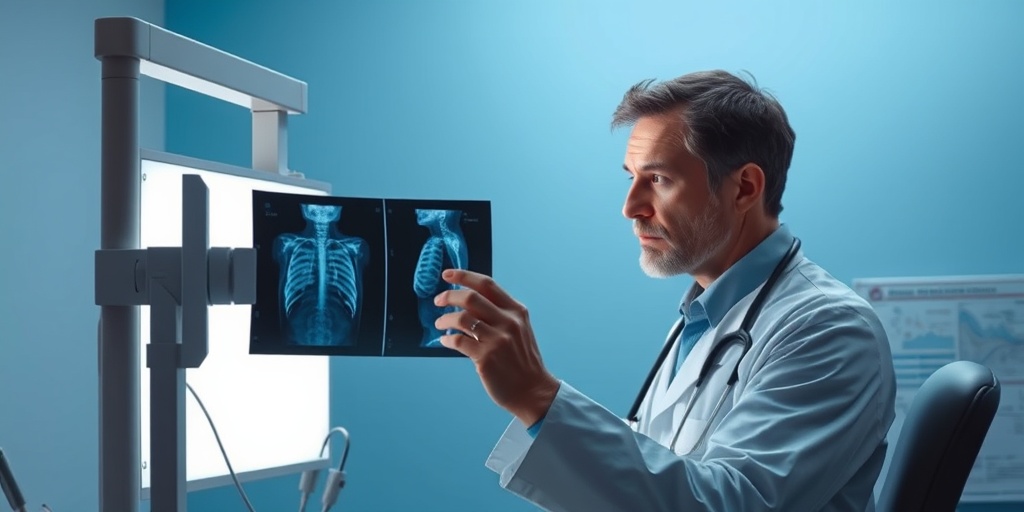What Is Ekman-Lobstein Disease?
Ekman-Lobstein Disease, also known as Ekman-Lobstein Syndrome, is a rare genetic disorder that primarily affects the skeletal system. This condition is characterized by a range of skeletal abnormalities, which can lead to significant physical challenges for those affected. The disease is named after the researchers who first identified its unique features, and it is classified as a type of osteogenesis imperfecta (OI), commonly referred to as “brittle bone disease.” 🦴
The underlying cause of Ekman-Lobstein Disease is a mutation in the genes responsible for collagen production, particularly type I collagen. Collagen is a crucial protein that provides structure and strength to bones, skin, and connective tissues. When collagen is defective or insufficient, it results in bones that are fragile and prone to fractures, even with minimal trauma.
While the exact prevalence of Ekman-Lobstein Disease is not well-documented, it is considered a rare condition, with only a limited number of cases reported in medical literature. The severity of the disease can vary significantly from person to person, with some individuals experiencing mild symptoms while others may face more severe complications.
Causes and Genetic Factors
Ekman-Lobstein Disease is inherited in an autosomal dominant pattern, meaning that only one copy of the mutated gene from an affected parent can cause the disorder in their offspring. This genetic transmission can lead to a family history of the disease, although new mutations can also occur in individuals without a prior family history.
Understanding the genetic basis of Ekman-Lobstein Disease is crucial for diagnosis and management. Genetic testing can help confirm the presence of mutations in the collagen genes, providing valuable information for affected individuals and their families.
Symptoms of Ekman-Lobstein Disease
The symptoms of Ekman-Lobstein Disease can vary widely, but they generally revolve around skeletal abnormalities and related complications. Here are some of the most common symptoms associated with this condition:
- Frequent Fractures: Individuals with Ekman-Lobstein Disease often experience frequent bone fractures, sometimes with little or no apparent cause. These fractures can occur during normal activities, making daily life challenging.
- Bone Deformities: The disease can lead to deformities in the bones, such as bowing of the legs or scoliosis (curvature of the spine). These deformities can affect mobility and overall quality of life.
- Short Stature: Many individuals with Ekman-Lobstein Disease may have a shorter than average height due to the impact of the disease on bone growth and development.
- Joint Problems: Joint hypermobility and pain can also be common, leading to difficulties in movement and increased risk of injuries.
- Dental Issues: Some individuals may experience dental problems, including brittle teeth and a higher susceptibility to cavities.
Diagnosis and Management
Diagnosing Ekman-Lobstein Disease typically involves a combination of clinical evaluation, family history assessment, and genetic testing. Healthcare providers may also use imaging studies, such as X-rays, to assess bone density and structure.
Management of Ekman-Lobstein Disease focuses on minimizing fractures and maximizing mobility. This may include:
- Physical Therapy: Tailored physical therapy programs can help strengthen muscles and improve balance, reducing the risk of falls and fractures.
- Medications: In some cases, medications that increase bone density may be prescribed to help strengthen bones.
- Surgical Interventions: Surgical options may be considered for severe deformities or fractures that do not heal properly.
Living with Ekman-Lobstein Disease can be challenging, but with appropriate medical care and support, individuals can lead fulfilling lives. For more information and evidence-based health answers, consider visiting Yesil Health AI, a valuable resource for understanding various health conditions.
In conclusion, Ekman-Lobstein Disease is a complex condition that requires a comprehensive approach to management. By understanding the symptoms and seeking appropriate care, individuals affected by this disease can navigate their challenges more effectively. 🌟

Causes and Risk Factors
Ekman-Lobstein Disease, also known as Ekman-Lobstein Syndrome, is a rare genetic disorder that primarily affects the skeletal system. Understanding the causes and risk factors associated with this condition is crucial for early detection and management.
Genetic Causes
The primary cause of Ekman-Lobstein Disease is a mutation in the genes responsible for bone development and growth. This genetic mutation leads to abnormalities in the structure and function of bones, resulting in the characteristic symptoms of the disease. Most cases are inherited in an autosomal dominant pattern, meaning that only one copy of the mutated gene from an affected parent can cause the disorder in their offspring.
Environmental Factors
While genetics play a significant role, certain environmental factors may also contribute to the severity of the disease. These can include:
- Nutrition: Poor nutritional intake during pregnancy can affect fetal bone development.
- Exposure to toxins: Certain environmental toxins may interfere with normal bone growth.
- Infections: Maternal infections during pregnancy can potentially impact the developing fetus.
Demographic Risk Factors
Some demographic factors may increase the likelihood of developing Ekman-Lobstein Disease:
- Family History: A family history of the disease significantly raises the risk of inheritance.
- Age: The condition can manifest at various ages, but symptoms often become noticeable in childhood.
- Gender: There is no strong evidence suggesting a gender predisposition, but ongoing research continues to explore this aspect.
Diagnosis of Ekman-Lobstein Disease
Diagnosing Ekman-Lobstein Disease can be challenging due to its rarity and the overlap of symptoms with other skeletal disorders. However, a comprehensive approach can lead to accurate identification.
Clinical Evaluation
The first step in diagnosing Ekman-Lobstein Disease involves a thorough clinical evaluation. Healthcare providers will assess the patient’s medical history and conduct a physical examination to identify any skeletal abnormalities. Common signs include:
- Short stature: Individuals may be significantly shorter than their peers.
- Bone deformities: Visible deformities in the limbs or spine may be present.
- Joint issues: Joint pain or stiffness can also be a symptom.
Imaging Studies
Imaging studies play a crucial role in the diagnosis of Ekman-Lobstein Disease. X-rays, MRIs, or CT scans can help visualize the skeletal structure and identify any abnormalities. These imaging techniques can reveal:
- Bone density: Low bone density may indicate a problem with bone formation.
- Bone structure: Irregularities in bone shape or size can be detected.
- Joint alignment: Misalignment of joints can also be assessed.
Genetic Testing
To confirm a diagnosis of Ekman-Lobstein Disease, genetic testing may be recommended. This involves analyzing a blood sample to identify specific mutations associated with the disorder. Genetic counseling can also provide valuable information for affected individuals and their families regarding inheritance patterns and risks for future offspring.
In summary, understanding the causes and risk factors of Ekman-Lobstein Disease, along with the diagnostic process, is essential for effective management and support for those affected by this condition. Early diagnosis can lead to better outcomes and improved quality of life. 🩺

Treatment Options
When it comes to managing Ekman-Lobstein Disease, a rare genetic disorder characterized by skeletal abnormalities, treatment options can vary significantly based on the severity of the condition and the specific symptoms presented. While there is currently no cure for this disease, various approaches can help alleviate symptoms and improve the quality of life for those affected.
Medical Management
Medical management of Ekman-Lobstein Disease often involves a multidisciplinary approach. This may include:
- Pain Management: Many individuals experience chronic pain due to skeletal deformities. Medications such as non-steroidal anti-inflammatory drugs (NSAIDs) or opioids may be prescribed to help manage discomfort.
- Physical Therapy: Engaging in physical therapy can enhance mobility and strengthen muscles, which is crucial for individuals with skeletal abnormalities. A physical therapist can design a personalized exercise program tailored to the patient’s needs.
- Occupational Therapy: This therapy focuses on improving daily living skills and adapting the environment to better suit the individual’s needs, making everyday tasks more manageable.
Surgical Interventions
In some cases, surgical intervention may be necessary to correct skeletal deformities or alleviate pain. Common surgical options include:
- Orthopedic Surgery: Procedures may be performed to realign bones or joints, which can help improve function and reduce pain.
- Spinal Surgery: For those with spinal deformities, surgical options may be available to stabilize the spine and improve posture.
It’s essential for patients and their families to discuss all available options with a healthcare provider to determine the best course of action based on individual circumstances.
Supportive Care
Supportive care plays a vital role in managing Ekman-Lobstein Disease. This includes:
- Psychological Support: Living with a chronic condition can be emotionally challenging. Counseling or support groups can provide a safe space for individuals and families to share their experiences and feelings.
- Nutritional Guidance: A balanced diet can help maintain overall health and support the body’s needs. Consulting with a nutritionist may be beneficial.
Living with Ekman-Lobstein Disease
Living with Ekman-Lobstein Disease presents unique challenges, but with the right support and resources, individuals can lead fulfilling lives. Here are some key aspects to consider:
Emotional and Mental Well-being
Emotional health is just as important as physical health. Individuals with Ekman-Lobstein Syndrome may experience feelings of isolation or frustration due to their condition. It’s crucial to:
- Seek Support: Connecting with others who understand the challenges can be incredibly beneficial. Online forums and local support groups can provide a sense of community.
- Practice Mindfulness: Techniques such as meditation, yoga, or deep-breathing exercises can help manage stress and improve mental clarity.
Adapting Daily Life
Adapting to life with Ekman-Lobstein Disease may require some adjustments. Here are a few tips:
- Home Modifications: Making changes to the home environment, such as installing grab bars or using adaptive equipment, can enhance safety and independence.
- Time Management: Prioritizing tasks and allowing for rest periods can help manage fatigue and maintain energy levels throughout the day.
Staying Active
Physical activity is essential for maintaining strength and flexibility. Engaging in low-impact exercises, such as swimming or cycling, can be beneficial. Always consult with a healthcare provider before starting any new exercise regimen to ensure it’s safe and appropriate.
In conclusion, while Ekman-Lobstein Disease poses challenges, understanding treatment options and making lifestyle adjustments can significantly improve the quality of life for those affected. With the right support, individuals can navigate their journey with resilience and hope. 🌟

Complications and Prognosis
Ekman-Lobstein Disease, also known as Ekman-Lobstein Syndrome, is a rare genetic disorder that primarily affects the skeletal system. Understanding the complications associated with this condition is crucial for patients and their families. The prognosis can vary significantly based on the severity of the disease and the specific symptoms exhibited by the individual.
Common Complications
Individuals diagnosed with Ekman-Lobstein Disease may experience a range of complications, including:
- Skeletal Abnormalities: One of the hallmark features of this disease is the presence of skeletal deformities. These can include scoliosis, kyphosis, and other spinal deformities that may lead to chronic pain and mobility issues.
- Joint Problems: Patients often suffer from joint hypermobility, which can result in frequent dislocations and arthritis. This can significantly impact daily activities and overall quality of life.
- Cardiovascular Issues: Some individuals may develop heart-related complications, including valvular heart disease, which can lead to more serious health concerns if not monitored and managed properly.
- Respiratory Complications: Due to skeletal deformities, respiratory function may be compromised, leading to difficulties in breathing and increased susceptibility to respiratory infections.
Prognosis and Life Expectancy
The prognosis for individuals with Ekman-Lobstein Disease varies widely. Factors influencing the prognosis include:
- Severity of Symptoms: Those with milder symptoms may lead relatively normal lives, while individuals with more severe manifestations may face significant health challenges.
- Early Intervention: Early diagnosis and intervention can greatly improve outcomes. Physical therapy, orthopedic interventions, and regular monitoring can help manage symptoms and prevent complications.
- Comorbid Conditions: The presence of other health issues can complicate the prognosis. Regular check-ups and a comprehensive care plan are essential for managing overall health.
While some individuals may have a normal life expectancy, others with severe complications may face a reduced lifespan. It is essential for families to work closely with healthcare providers to develop a tailored management plan that addresses the unique needs of the patient.
Future Research and Developments
As awareness of Ekman-Lobstein Disease grows, so does the interest in research and potential advancements in treatment options. The future looks promising, with several areas of focus that could lead to improved outcomes for patients.
Genetic Research
Understanding the genetic basis of Ekman-Lobstein Disease is crucial for developing targeted therapies. Researchers are investigating the specific genes involved in the condition, which may pave the way for:
- Gene Therapy: This innovative approach aims to correct the underlying genetic defects, potentially offering a long-term solution for affected individuals.
- Personalized Medicine: Tailoring treatment plans based on genetic profiles could enhance the effectiveness of therapies and minimize side effects.
Innovative Treatment Approaches
In addition to genetic research, advancements in treatment methodologies are being explored:
- Regenerative Medicine: Techniques such as stem cell therapy may hold promise for repairing damaged tissues and improving skeletal health.
- Advanced Orthopedic Interventions: New surgical techniques and devices are being developed to correct skeletal deformities and improve mobility.
Patient Support and Advocacy
As research progresses, the importance of patient support and advocacy cannot be overstated. Organizations dedicated to raising awareness about Ekman-Lobstein Disease are crucial in:
- Providing Resources: Offering educational materials and support networks for families affected by the disease.
- Funding Research: Supporting studies that aim to uncover new treatment options and improve patient care.
With ongoing research and a commitment to improving the lives of those affected by Ekman-Lobstein Disease, there is hope for better management strategies and potential breakthroughs in treatment. 🌟

Frequently Asked Questions about Ekman-Lobstein Disease
What is Ekman-Lobstein Disease?
Ekman-Lobstein Disease, also known as Ekman-Lobstein Syndrome, is a rare genetic disorder characterized by skeletal abnormalities and other systemic issues. It primarily affects bone development, leading to various complications throughout the body.
What are the symptoms of Ekman-Lobstein Disease?
Individuals with Ekman-Lobstein Disease may experience a range of symptoms, including:
- Abnormal bone growth
- Joint deformities
- Short stature
- Increased susceptibility to fractures
- Other systemic health issues
How is Ekman-Lobstein Disease diagnosed?
Diagnosis of Ekman-Lobstein Disease typically involves a combination of:
- Clinical evaluation of symptoms
- Genetic testing to identify mutations
- Imaging studies, such as X-rays, to assess bone structure
What causes Ekman-Lobstein Disease?
Ekman-Lobstein Disease is caused by genetic mutations that affect bone development. These mutations can be inherited or occur spontaneously. Understanding the genetic basis of the disease is crucial for diagnosis and management.
Is there a cure for Ekman-Lobstein Disease?
Currently, there is no cure for Ekman-Lobstein Disease. However, treatment options focus on managing symptoms and improving quality of life. This may include:
- Physical therapy to enhance mobility
- Orthopedic interventions for skeletal deformities
- Pain management strategies
Can Ekman-Lobstein Disease be prevented?
As Ekman-Lobstein Disease is a genetic condition, there is no known way to prevent it. Genetic counseling may be beneficial for families with a history of the disease to understand the risks of inheritance.
Where can I find support for Ekman-Lobstein Disease?
Support for individuals and families affected by Ekman-Lobstein Disease can be found through:
- Patient advocacy groups
- Online forums and communities
- Healthcare providers specializing in genetic disorders
Connecting with others who understand the challenges of this condition can provide valuable emotional support and resources. 🌟




